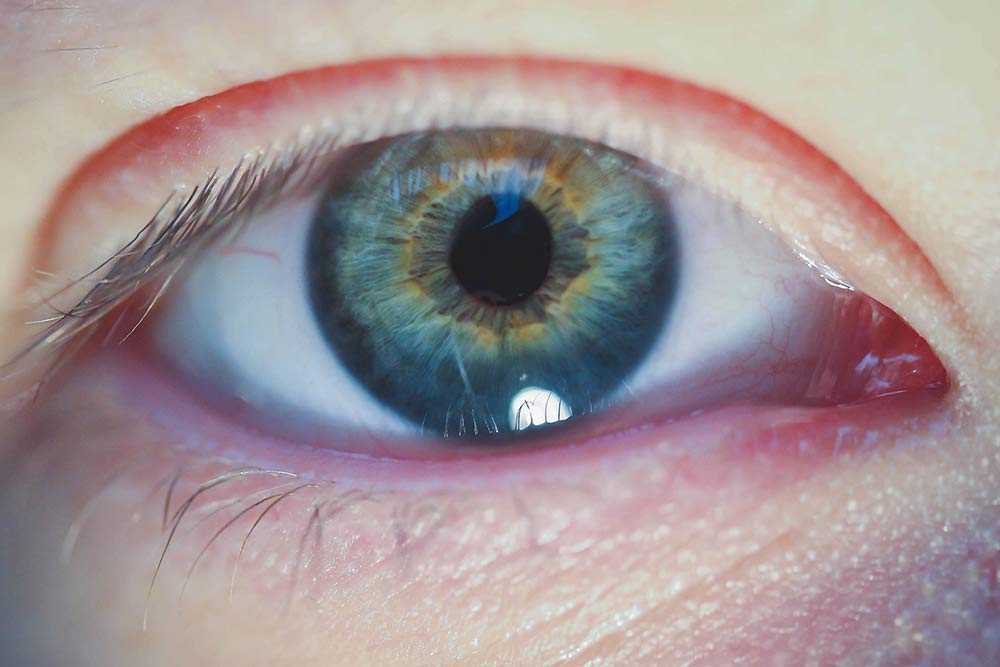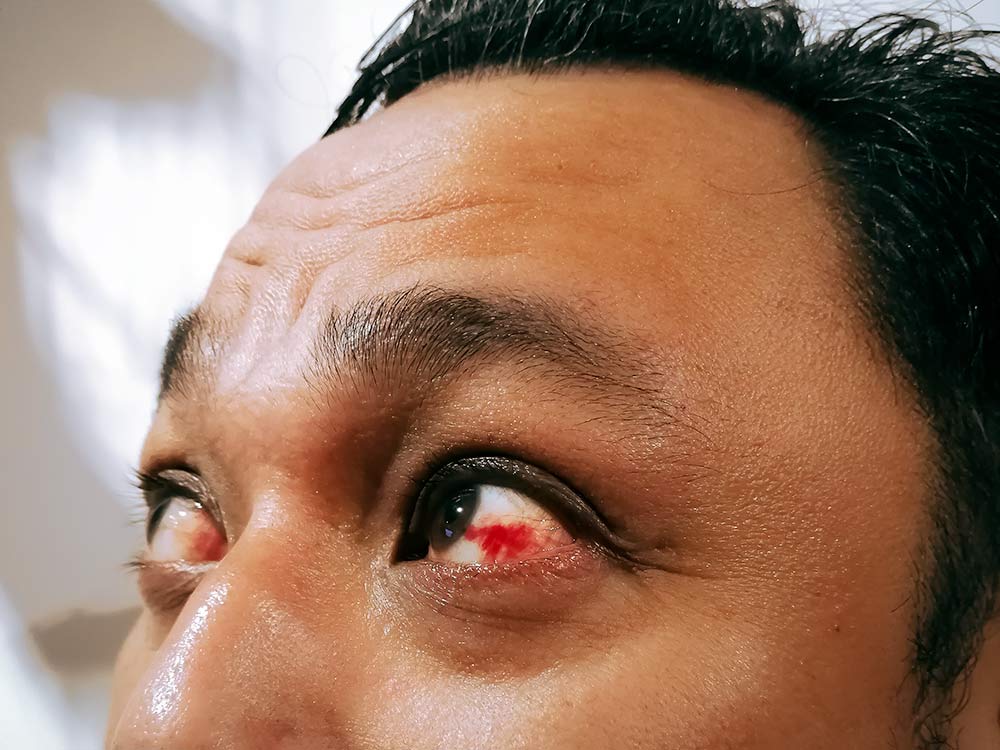
Your cornea does a lot more than just sit at the front of your eye—it’s essential to how you see the world. This clear, dome-shaped layer helps your eye focus light, protects against irritants, and triggers your natural blink reflex. But because the cornea is so delicate and exposed, it’s also susceptible to a variety of eye conditions that can affect your vision and eye comfort.
In this article, we’ll walk you through five common conditions that impact the cornea, explain how each one affects your eyes, and share what to look out for when it comes to symptoms and treatment. Whether you’re experiencing blurry vision or simply want to stay informed, this guide will help you understand the critical role your cornea plays in overall eye health—and how to keep it in top shape.
1. Eye Allergies
Allergies affect almost everyone at some point in their life. Typically, eye allergies are triggered by one of the following:
- Indoor allergens like dust, mold and dander
- Outdoor allergens like pollens
- Irritants like smoke and perfume
Symptoms of Eye Allergies
Itching, redness, burning, clear or watery discharge, mucus discharge, sensitivity to light, puffiness, hazy vision, and foreign body sensation. A foreign body sensation is when a person feels there is something in their eye even when there is not.
Treatment Options
Over-the-counter antihistamine eye drops, oral antihistamines like Zyrtec® (cetirizine), cold compresses, and avoiding known allergens (like keeping windows closed during high pollen days) can help. For more severe or chronic symptoms, an eye doctor may recommend prescription drops or evaluate for other conditions that mimic allergies, like dry eye or blepharitis.
Prevention of Eye Allergies
1. See an Allergy Specialist
If you’re experiencing recurring or severe allergy symptoms, consider seeing an allergist. They can help identify exactly what you’re allergic to through specialized testing. Once you know your triggers—like pollen, dust mites, or pet dander—you can better avoid them and create a personalized plan that may include allergy medications or immunotherapy.
2. Keep Up with Regular Eye Exams
Even if your vision feels fine, regular visits with your eye doctor are essential. Eye care professionals can distinguish between eye allergies and other conditions that share similar symptoms, like dry eye or infections. They can also recommend the best treatments, such as antihistamine drops or preservative-free artificial tears, to soothe irritated eyes and protect your cornea.
3. Make Lifestyle Changes:
-
Keep windows closed during high pollen seasons.
-
Use air purifiers indoors to reduce allergens.
-
Wash your hands before touching your eyes.
-
Shower and change clothes after spending time outside.
-
Avoid rubbing your eyes, which can make symptoms worse.
2. Ocular Surface Disease / Dry Eye
Dry eye is one of the most common eye conditions people experience—and if you’ve ever felt that scratchy, burning sensation, you know how uncomfortable it can be. For some, it’s a mild annoyance. For others, it’s a chronic, painful condition that can interfere with daily life
Tears Matter
Tears aren’t just for crying—they’re a critical part of maintaining healthy eyes. They wash away dust and irritants, keep the surface of your eyes moist and smooth, and help protect against infections. Healthy tears are made up of three layers, each with a specific job:
-
Oily layer (lipid): Prevents tears from evaporating too quickly
-
Watery layer (aqueous): Keeps the eye hydrated
-
Mucin layer: Helps spread the tear film evenly across the eye’s surface
When your eyes don’t produce enough tears—or when those layers are out of balance—it can lead to dryness, discomfort, and vision issues.
Symptoms to Watch For
-
Red or irritated eyes
-
Itchy or burning sensations
-
Blurry or hazy vision
-
Feeling like there’s something in your eye (foreign body sensation)
-
Discomfort when reading, watching screens, or driving
If any of this sound familiar, don’t worry—there are great treatment options available.
Treatment Options
The best treatment for dry eye depends on what’s causing it. Here are some of the most effective solutions:
-
Warm compresses to loosen clogged glands in the eyelids
-
Over-the-counter artificial tears to refresh and lubricate
-
Prescription eye drops that reduce inflammation and increase tear production
-
Oral medications or punctal plugs (tiny devices that help keep moisture on the eye longer)
-
Eyelid procedures to address chronic inflammation or gland dysfunction
Two advanced therapies are also helping patients find relief:
-
Intense Pulsed Light (IPL) – This non-invasive treatment targets inflammation around the eyelids and boosts the quality of your tear film, especially the oily layer that prevents evaporation.
-
LipiFlow® – A thermal massage treatment that warms and gently presses the eyelids to improve gland function and restore tear balance.

3. Eye Infections
Eye infections are another common eye condition that can affect anyone—whether from bacteria, viruses, or fungi. When an eye infection involves the cornea—known as infectious keratitis—it can lead to serious symptoms and potential complications if not treated promptly.
Symptoms:
-
Red, swollen, or painful eyes
-
Discharge that is yellow, green, or sticky
-
Blurred or reduced vision
-
Sensitivity to light
-
A gritty or burning sensation
-
Excessive tearing or crusting around the lashes
Treatment and Care for a Corneal Eye Infection
If you suspect an eye infection, it’s important to see an eye care professional quickly. Treatment depends on the cause and might include:
- Prescription antimicrobial eye drops:
-
-
Antibiotic drops for bacterial infections
-
Antiviral drops or oral meds for viral infections like herpes simplex
-
Antifungal drops for fungal keratitis
-
-
Oral medications: Sometimes prescribed to support treatment, especially for deeper or more severe infections.
-
Debridement: Gently removing infected or damaged cells from the cornea to help healing and improve medication effectiveness.
-
Anti-inflammatory medications: Carefully used to reduce swelling and pain but only after infection control is underway, since steroids can worsen infections if used too early.
-
Pain relief: To keep you comfortable during healing, your doctor might recommend lubricating drops or other measures.
-
How to Prevent an Eye Infection
-
Good hygiene habits like washing hands frequently and avoiding touching your eyes
-
Avoiding contact lenses until the infection clears
4. Herpes Zoster (Shingles)
Herpes Zoster, commonly known as shingles, is caused by the same virus that causes chickenpox—varicella-zoster virus. After a chickenpox infection, the virus can lie dormant in your nerve cells and reactivate years later as shingles. When shingles affects the eye area, it’s called Herpes Zoster Ophthalmicus, and it can seriously impact the cornea and overall eye health.
An essential note about herpes zoster is that corneal damage can appear once the shingles have disappeared. It is important to schedule a follow-up appointment if you’ve experienced facial shingles to avoid any long-term effects.
When shingles involves the eye, the virus inflames the nerves and tissues around and within the eye, including the cornea. This can lead to:
-
Corneal inflammation (keratitis) causing redness, pain, and swelling
-
Corneal ulcers or scarring which may blur vision or cause long-term vision problems
-
Dry eye symptoms due to nerve damage affecting tear production
-
Potential nerve-related pain (postherpetic neuralgia), which can be severe and last long after the rash heals.
Symptoms:
- High temperature
- Painful rash
- Eye redness
- Sensitivity to light
- Blurry or foggy vision
Decreased corneal sensitivity can be caused by herpes zoster and is often permanent.
Treatment Options for Herpes Zoster
-
Antiviral medications (oral or intravenous): To stop the virus from multiplying and reduce severity. Starting treatment within 72 hours of rash onset is best.
-
Steroid eye drops: To reduce inflammation, but only under close supervision.
-
Pain management: Including medications to control acute pain or postherpetic neuralgia.
-
Lubricating eye drops or ointments: To protect the cornea and keep it moist.
-
Follow-up care: Regular eye exams to monitor healing and detect any complications early.
Prevention of Shingles and Tips to Protect Your Eyes
-
Get the shingles vaccine: Recommended for adults over 50, the vaccine greatly reduces your risk of shingles and its complications.
-
Avoid touching or scratching rash areas near your eyes.
- Good hygiene habits like washing hands frequently and avoiding touching your eyes
5. Corneal Dystrophies
There are more than 20 different types of corneal dystrophies – each one affecting different parts of the cornea. With corneal dystrophy, one or more pieces of the cornea’s regular clarity changes due to a shape change or an increase in cloudy-like material within the eye. A dystrophy is typically inherited and can affect both eyes equally. Usually dystrophies progress gradually.
Symptoms of Corneal Dystrophies
-
Clouding or haziness in vision
-
Distorted or blurred vision
-
Light sensitivity (photophobia)
-
Frequent tearing
-
Discomfort or the feeling of something in the eye
-
In some types, pain can occur when abnormal cells disrupt the corneal surface
Common dystrophies include:
- Fuch’s Dystrophy
- Keratoconus
- Lattice Dystrophy type I
- Lattice Dystrophy type II
- Map dot fingerprint dystrophy
Treatment Options
There is no cure for corneal dystrophies, but many are manageable. Treatment depends on the type and severity:
-
Lubricating eye drops or ointments to relieve dryness or discomfort
-
Hypertonic saline drops or ointments to reduce swelling in some types
-
Bandage contact lenses to protect the cornea during healing
-
Laser treatment (PTK) to smooth the cornea in certain cases
-
Corneal transplant (partial or full thickness) if vision becomes significantly impaired
Prevention
No prevention is known at this time as it’s a genetic condition. There is some research suggesting smoking is associated with more advanced Fuchs endothelial dystrophy.
Protecting Your Eyes from Injury
Your cornea plays a vital role in how clearly and comfortably you see the world. From dryness and allergies to infections, inherited conditions, and even viruses like shingles, the cornea can be affected by a wide range of issues. But the good news? Many of these conditions are manageable—especially with early detection and proper care.
Whether you’re experiencing symptoms like blurred vision, discomfort, or dryness, or just want to stay proactive about your eye health, regular eye exams are your best defense. Don’t wait for a problem to interrupt your daily life—your eyes deserve consistent care.
If you have questions about your cornea, symptoms you’re experiencing, or are due for a check-up, schedule an appointment with one of our eye care specialists. We’re here to help you protect and preserve your vision, every step of the way.
